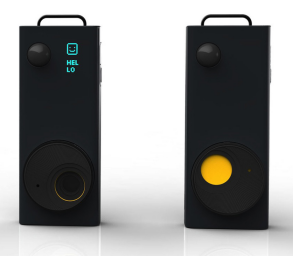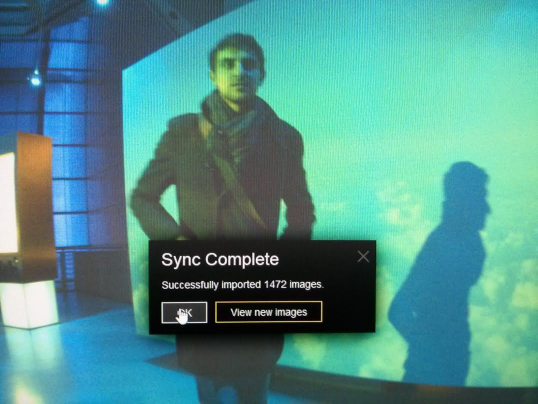Using the Autographer Highlights the Novelty Still Inherent in the Lifelogging Device Market
Over the weekend I had a chance to try out a recently released “lifelogging” wearable device, the Autographer by Oxford Metrics Group (OMG). The company describes it as “the world’s first intelligent wearable camera”. The device clips on your clothing or attaches to a lanyard, and relies on its five sensors to automatically take photos throughout the day. The sensors detect location (through GPS), light, direction (through a magnetometer), motion (with an accelerometer) and temperature.
The device itself is very easy to use. You twist a cover on the front to expose the lens and it starts taking photos about every five minutes. The frequency of snaps can be set to low, medium or high. To capture a specific moment, you can press a button that captures a sequence of nine photos.
I was happy with the Autographer’s generous 8GB of storage — a day’s worth of images (almost 1,500) took up only 8 percent of the available space. The device’s five-megapixel wide-angle fish-eye lens produced decent images, but they are a little lacking in sharpness and colour. OMG claims that the device packs a day’s worth of battery life. My usage matched this figure, as long as I turned off both GPS and Bluetooth.
The Bluetooth connection lets you sync photos with iOS devices using the Autographer app or, like me, you can use its desktop software for importing and managing the images. The software is very simple and easy to use, but at times I did notice it struggle when navigating through hundreds of images.
After importing the photos I had to do a fair amount of manual work sorting through them. I found a few images worth posting to Instagram and perhaps more importantly I was able to put together this video montage of my day out.
Autographer is one of the first products in a new category of wearable devices. The category and the larger wearables market is still in its very earlier stages, so the Autographer has some not entirely unexpected shortcomings. For example, I noticed that the device and its software did not use the sensors to their full extent. Some of the photos came out blurry, which is something that could have been avoided with better use of its accelerometer. And many indoor photos in very low light conditions were underexposed, raising doubts about the effectiveness of the light meter. In addition, the desktop software lacks photo-editing capabilities; I had to turn to third-party software to batch-edit images.
These shortcoming should be seen in the context of a pioneering product in an exciting new market. After more than a decade of continuous improvements to smartphones, it’s easy to forget that many pioneering mobile devices had similarly rough edges.
I admire OMG’s vision in creating this device and setting a benchmark for itself and other companies. Rough edges will be smoothed out, and the sizes and prices of such lifelogging devices will shrink in the not-so-distant future. My experience with Autographer confirmed my excitement at witnessing the start of a brand new market. I look forward to seeing the next stage.
Our chief of research, Ben, has been trying out the Autographer, too. For a video of one of his days, see here.


 Twitter
Twitter
 Facebook
Facebook
 LinkedIn
LinkedIn
 Email
Email